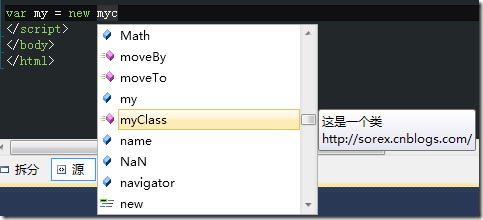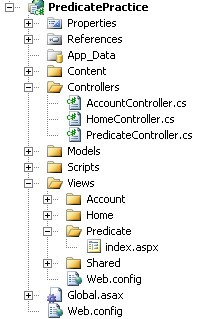首先,解释一下[专有线程]这里我所表达的意思:就是对某一类任务(即调用同一个方法)用一个Thread,然后在自己封装一个处理列表,通过这一个线程循环处理任务。这里我给出我的代码:
using System;
using System.Collections.Generic;
using System.Text;
using System.Threading;
namespace POET.Common
{
/// <summary>
/// @author: gxjiang
/// @date : 2011/4/7
/// @description : 提供一个专有的线程封装,使得这个线程可以去处理一系列的事情。
/// </summary>
public class ExclusiveThread<T>
{
/// <summary>
/// 任务列表
/// </summary>
private Queue<T> TaskQueue = new Queue<T>();
/// <summary>
/// 是否被停止
/// </summary>
private bool IsStopped = false;
/// <summary>
/// 处理的线程
/// </summary>
private Thread InnerThread;
/// <summary>
/// 出队列时处理方法
/// </summary>
private DequeueHandler CallBack;
public delegate void DequeueHandler(T item);
/// <summary>
/// 线程停止事件
/// </summary>
public event EventHandler Stopped;
public ExclusiveThread(DequeueHandler callBackFunc)
{
this.CallBack = callBackFunc;
this.CreateInnerThread();
}
private void ThreadFunction()
{
while (true)
{
lock (this.TaskQueue)
{
if (this.TaskQueue.Count > 0)
{
T item = this.TaskQueue.Dequeue();
this.OnDequeue(item);
}
else
{
if (this.IsStopped)
this.OnStop();
break;
}
}
}
}
private void OnStop()
{
EventHandler handler = Stopped;
if (handler != null)
handler(this, EventArgs.Empty);
}
private void OnDequeue(T item)
{
if (this.CallBack != null)
this.CallBack(item);
}
private void AbortInnerThread()
{
try
{
if (this.InnerThread != null)
this.InnerThread.Abort();
}
catch
{
}
}
private void CreateInnerThread()
{
this.InnerThread = new Thread(new ThreadStart(ThreadFunction));
}
private void InnerThreadAction()
{
if (this.InnerThread.ThreadState == ThreadState.Unstarted) this.InnerThread.Start();
else if (this.InnerThread.ThreadState == ThreadState.Stopped || this.InnerThread.ThreadState == ThreadState.Aborted)
{
this.CreateInnerThread();
this.InnerThread.Start();
}
}
/// <summary>
/// 增加处理任务
/// 若线程么有启动则启动
/// 若已经启动就添加到任务队列中
/// 若任务处理完了,则挂起线程
/// </summary>
/// <param name="item">处理任务</param>
public void Add(T item)
{
if (this.IsStopped)
throw new ExclusiveThreadException("此线程已经停止,不可以再添加任务。");
lock (this.TaskQueue)
{
this.TaskQueue.Enqueue(item);
this.InnerThreadAction();
}
}
/// <summary>
/// 停止处理任务,触发Stopped事件
/// </summary>
public void Stop()
{
lock (this.TaskQueue)
{
this.IsStopped = true;
if (this.TaskQueue.Count == 0 && this.InnerThread.ThreadState == ThreadState.Stopped)
this.OnStop();
}
}
/// <summary>
/// 重新开始任务,之后调用[Add]方法加任务
/// </summary>
public void Resume()
{
this.IsStopped = false;
}
}
/// <summary>
/// 自定义异常
/// </summary>
public class ExclusiveThreadException : ApplicationException
{
public ExclusiveThreadException():base() { }
public ExclusiveThreadException(string msg) : base(msg) { }
public ExclusiveThreadException(string msg, Exception innerException) : base(msg, innerException) { }
}
}
在这个线程的包装类中,我称之为专有线程或者定制线程,我可以把很多相同的任务放在这个队列中,让这一个线程循环处理。
另一个方式是用线程池(ThreadPool),这个我也想过去用,可是我个人觉得并不是所有时候都能用,因为有时候还是得考虑一下线程的执行先后顺序。
这里我提出来这个问题?到底是线程池去处理很多的线程较好?还是用我这种专有线程去处理一类任务?各有什么缺憾之处呢?
希望大家给予讨论!





